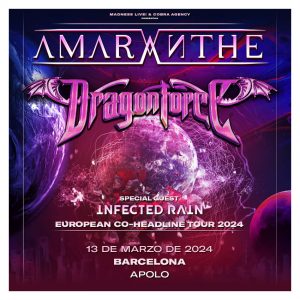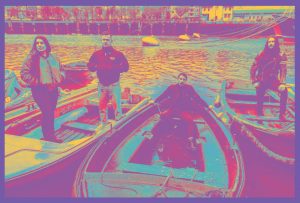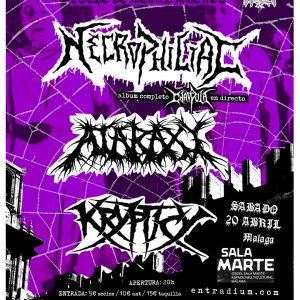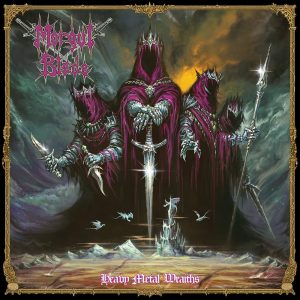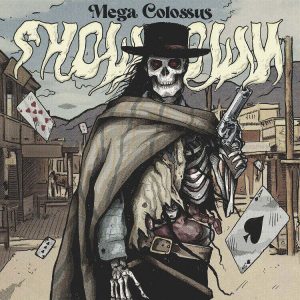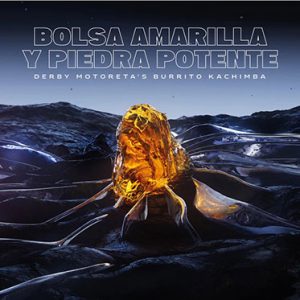DEMON HEAD (EN)
-Hello. Thanks for taking your time. How are you guys holding up?
Hej Tania, thank you for listening and honoured to be asked these questions. We just had a little taste of ways that Covid-19 can get in the way of a good plan – we had our release concert with Shaam Larein and Slægt next week cancelled, and had to break off our time together a few days ago as one member got the virus and another had to rush back to Ireland before transportation became impossible. But on the whole I think we have been spared a lot of cancellations and other hardships that people are experiencing these days. Patience and preparation is the only way forward I guess.
-You will soon release your new album. “Viscera”. A powerful and evocative title. A bit symbolic too maybe. What’s its significance (figuratively)?
I am always searching for perfect words, words that convey more than one meaning and speak to something deeper in me, and Viscera is one of those nearly perfect combinations of letters. When the lyrics were all written for this album, I was reading them over and it dawned on me that there was a definite theme this time – the songs appeared as chapters in two different narratives that deal with emotion beneath the layers we humans are normally aware of, as well as violence on a range of levels. Viscera can mean both these things; it’s the innermost things you can feel, it’s also your innards, the cogs and wheels in our fleshy machines. The others then agreed that the word was a simple signifier conveying meaning on many levels.
-It points somewhere deep. Internal. Yet real. Somewhere beyond emotion. It’s blood and body. In fact your music feels a tad experimental yet tangible, like made from the guts. Where does your music come from and what is it? An exorcism? A catharsis? A vessel?
That’s exactly how it felt this time. Well, our music and lyrics always come from deep inside, but this time there was the urgency of crises in some of our lives and therefore our community, and for me personally a struggle against meaninglessness that took two years to work through. It’s not complete emotional pornography, as I’m not the narrator of the songs, but of course my mental state is reflected in the lyrics. So when we were working on this album, it was completely necessary for me to put words and voice to these things. It’s a vessel for existential and political questions, and exorcism of repressive thoughts and morals from the outside world, and it’s a catharsis when you can turn the fire in your blood into a volcano’s eruption and erase your ego. It’s also a lot of hard work and often very, very fun. The instrumental part of Viscera was almost completely composed by Birk, who I think has a special ability to go into himself and find melodies and harmonies that grip you and take you away, while they do not sound like anything else I’ve heard. When he offered us this music, written for us all, it felt like an organism that you had to find your part in, and then guide it with your own abilities and dreams. That was really an exercise in embodiment that was difficult yet extremely rewarding, and different from how we have composed albums before.
-In what ways does this human, corporeal aspect relate to the lyrics on the album?
Viscera is more focused on the near and the body than the previous albums. While I love fiction and especially stories that take you out of this reality and into dream worlds or speculative futures, I’ve grown tired with lyrics about the occult and dark fantasy. The world we live in is a lot scarier than horror movies, and I think most people feel this on a daily basis even if they don’t think about it or put it into words. The cultural, social and personal consequences of a world system that glorifies exploitation and alienates us all from ourselves and those around us (not to mention the earth we live on) are graver than we realize… Even for those in the affluent centres who benefit most from this state of the world. That is one aspect. The other is the realisation that we are just machines of flesh and bones, yet we are animate and conscious, and have dreams embedded within our muscles and bones. When faced with the emptiness that is part of existence in an alienated world, I look for the ghosts in the machine
– They’re written in a pretty poetical form. To what extent does the form, the shape and aesthetic of words impact or affect the meaning of what you are communicating and what you want to convey?
I think that the languages of myth and song are vessels that allow ideas or questions to be conveyed in a more open form than dissertations and pamphlets. An inquiry about our world and humans’ part in it needs to be posed on a cultural level too, so there is a lot of references in the lyrics to thoughts that are present in many other types of writing and discussion. The words and stories that I express are meant to be open to interpretation, so that each listener can pose their own questions and make their own pictures in their minds. I don’t think of myself as a poet (at least not a very good one), but I see the lyrics as very short and fragmented stories on a background of a mythic sort – which runs through the whole of the world we have created together with this music.
-And what are your inspirations? Musical and non-musical.
Between us in the band, there are so many different that it’s hard to include them all – so I can only speak for myself here. The works of the artist Odilon Redon left a deep impression on me after I saw an exhibition here in Copenhagen a few years ago. It’s a world that is dark and imaginative, while very open to interpretation, of visual poetry and short titles that encompass so much. Redon then was a gateway drug to Emile Verhaeren and Baudelaire. Then I am always inspired by books and love reading. Authors that I was reading at the time we wrote and recorded Viscera include Ursula K. LeGuin (The Word for World is Forest and The Dispossessed), Jorge Luis Borges (Fictions and The Book of Sand), N.K. Jemisin (The Broken Earth trilogy), Cixin Liu, Kafka, Octavia Butler and China Miéville. Musically, there are so many excellent artists, but I remember listening to Unlock the Shrine by The Ruins of Beverast, Third by Portishead, Ättestupa, Pothole in the Sky by Lisa O’Neil, Silva Pérez Cruz’s Vestida de Nit, the fantastic Ill Wicker, and many others.
-Let’s talk about the video for “Feline Smile”. It hides a lot of symbols and it’s done with the cut-up technique. Brion Gysin and Burroughs were mainly the two people who brought the cut-up formula to the pop culture and developed it further. Burroughs suggested cut-ups may be effective as some form of divination. He stated that “When you cut into the present the future leaks out”. So with what goal are you using this technique in the video? What is it a tool for?
The video is made by David Thélen, who also made a video for Death’s Solitude from Hellfire Ocean Void. I think he’s done a great work of video-cut-up, using the artwork from the album itself. The booklet for Viscera includes 11 collages that I made to provide a further doorway into or suggestion of possible interpretation, and it’s a technique I’ve never really read about but which give me exactly that feeling of transgressing the times and contexts of pictures, which allows you to create something unexpected. I like symbolism for its shamelessness in always alluding to other layers of meaning than the one on the surface, and I like the cutting and pasting as it’s a very direct way of manipulating images. Then I guess the initial inspiration to do it also comes from DIY punk records, zines and posters, where a lot of beautiful iconoclasm has happened by the inexperienced hands of scissor and glue.
-The symbols that it hides are present on the artwork of the album. What’s their significance and purpose?
The purpose is that each one can dwell deeper into each image and piece of music, and find their own significance therein. Some symbols mean very specific things to me, while they mean something different to each one in the band. I would rather let it stay that way, open, and welcoming to the curious
-On the album there are several non-ordinary (or non-traditional) instruments for the standard Metal band. Which ones? Why are they there and what do they add?
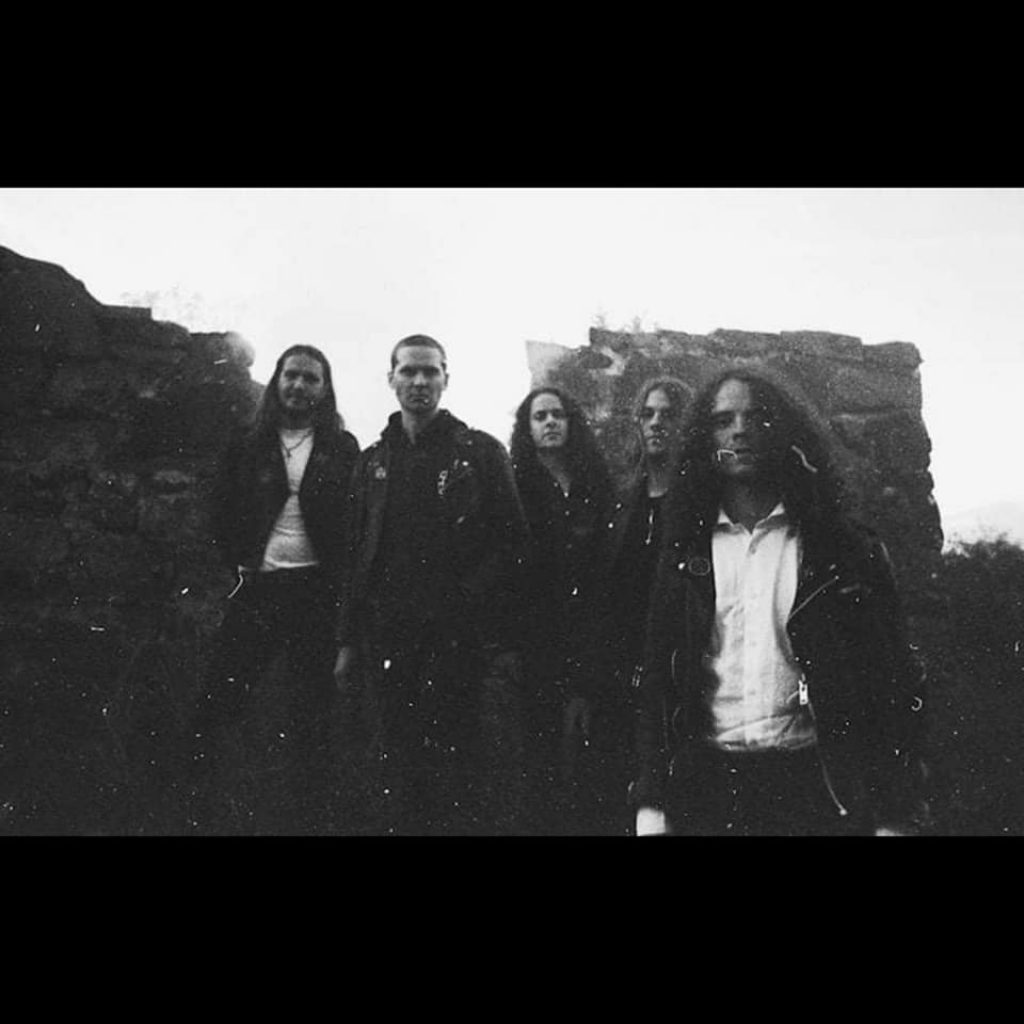
The album has quite a lot of mellotron, which is an instrument with taped bits of recorded orchestral instruments – strings, flutes, choirs and many more. Then there is church organ, recorded by Birk, and acoustic guitars in many forms. Birk has always brought along many elements from outside rock music, even on Ride the Wilderness many years ago, but on Viscera we allowed them to take more space and have a significant presence, and I think it works beautifully. I think Birk looks at music from a perspective outside of genre, where melodies, timbres and atmospheres are as important as the right notes on an electric guitar. For me it makes a lot of sense to have these other sounds and layers within a more typical rock setup, as we are always pushing ourselves and aiming for territory where we don’t necessarily know what will happen. We don’t try to make a rock or a metal album, but our instrumentation is the base on which we can reach for the unknown. In these cases, it’s very practical to use instruments such as the mellotron, when you don’t have the funds to hire a symphony orchestra.
-The album was recorded between the Sweet Silence Studios and a remote country house in Sweden. I’m especially interested in the latter. How does this “solitude” affect the final outcome?
Going away from our usual lives and settings is always a big part of recording an album for us. We have always recorded everything ourselves, and I don’t imagine that this will change. This time we decided to have two intense days at Sweet Silence Studios where the drums and bass were recorded with Flemming as an engineer, since we know him from before and his studio is just next door to our own. We chose this because this first part of an album can be nerve-wrecking, and we wanted to take the little technical difficulties to someone else in this beginning phase – and then Flemming has a collection of microphones and preamps that we could never afford ourselves. The real recording always begins for me when we are just the five of us, diving completely into each sound and role for days on end, cultivating a sort of wilful group psychosis that feels liminal. It’s a lot more pleasurable and easier when we are able to physically move away from society for a period of time, be close to nature and live as though the rest of the world doesn’t exist. It’s easy to get affected by the outside world, the expectations and normality of it, but in this way we can focus on what is really important in the music. Which is every little thing that the songs are built of, and our love for each other and the music.
– Even though working with a big label now or with someone like Flemming Rasmussen, DEMON HEAD has this DIY, almost rustic aesthetic. How much do you value this DIY ethos/aesthetic in underground music?
I value the DIY ethos very highly and I think it is from there that the most interesting and good music and art comes. The alternative is people making music because they want a career or money – that is something I can understand for professionally educated instrumentalists but don’t think I could ever do myself. It’s true that we recorded two days in Flemmings studio and afterwards signed a deal with Metal Blade for helping us getting the music out into the world, but to be honest, it plays a very little role in how we do things or how we think about the music or the band. As people we come from and are still part of a DIY music underground where people help each other out and do what they do for the love of art and community. Demon Head owes a lot to the ones who helped us out on every self-organised tour, and the community of friends in Copenhagen which has supported us since the beginning. You can really feel the difference when you begin to be exposed to a sort of mainstream, where many people’s dedication stops when they’re no longer getting paid to be in a certain place. That’s not to say that there isn’t a lot of people working venues and booking who definitely do it for the love, but it’s funny how the best food and easiest logistics you come across on tour are usually in the smallest places, the ones run voluntarily. In regards to the DIY aesthetic, I personally love it when you can see that people have had their work in their own hands. It’s not polished or over-glossy, and neither is real life.
-The cover artwork also fits with this kind of imagery. What could you comment on it?
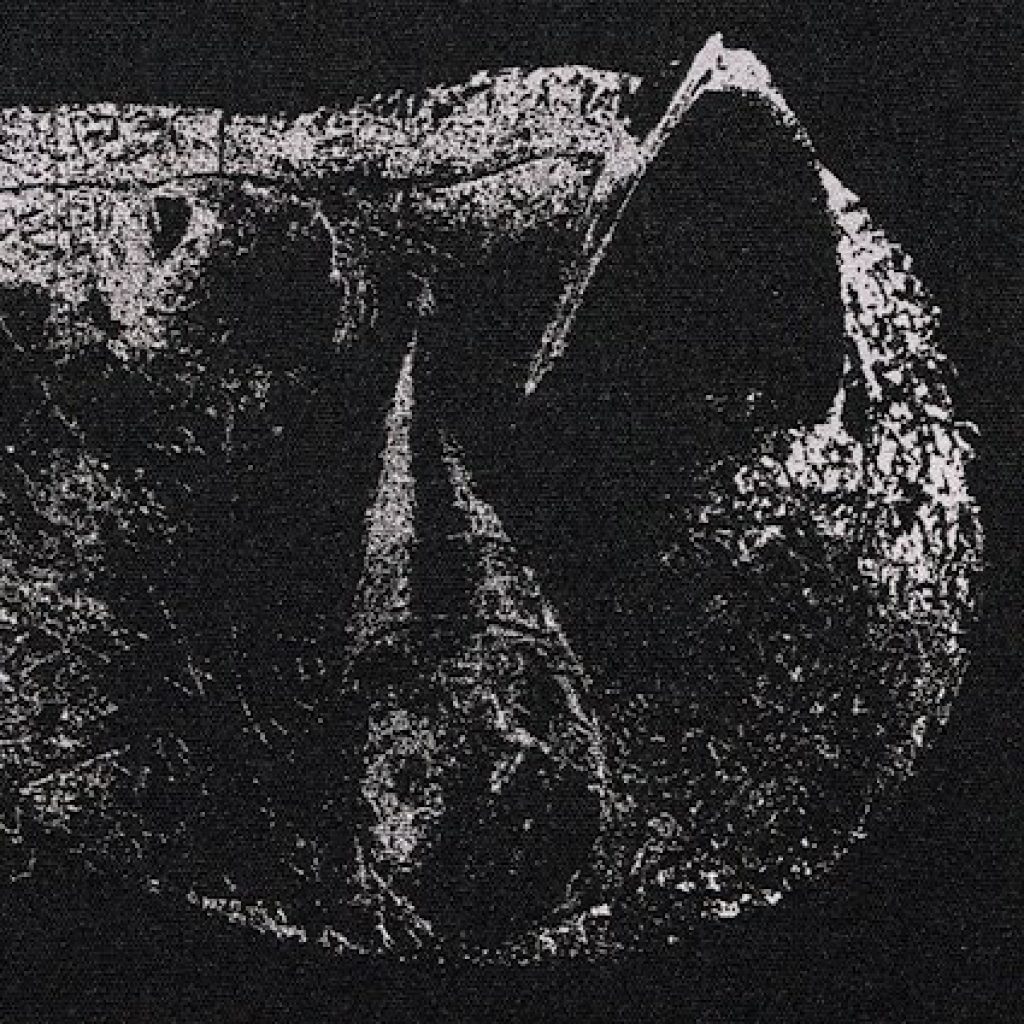
I am very happy with how the cover artwork has turned out (and it does look a bit like an old Cortex record, speaking of the DIY aesthetic). Recently I’ve been asked what the cover pictures, and only then realized that it’s maybe not as obvious as we thought. The cover is a manipulated version of a photograph of an object called a haruspex, which is a sculpture of a liver from the Etruscans, used for entrails divination. When we found it, it seemed like the perfect allegory of how humans search for meaning in the face of meaninglessness. Opening the stomach of an animal to answer cosmological questions is an act that encompasses everything from the body to the stars to invisible deities… I painted the letters with a brush and white paint, and the image was then manipulated by Mikkel (who plays the bass) and screen printed by him and our friend Johanna Dishyena (a very talented screen printer) to fabric, in order to give it a deeper texture than paper. In this way, the image really got woven into the background I think… It’s made for the gatefold LP format, so people should be aware that digitally you only see a bit of the image. And then, as mentioned, the inner artwork of the LP consists of one large cut-up in full colour and 10 smaller collages to accompany the lyrics.
-All this about “Viscera” being said; how would you describe it in just 3 words?
We give everything
-DEMON HEAD has developed over the years a very powerful, personal (or clear) sinister aesthetic. How do you get to a point where you know what kind of imagery the band needs and how do you transform this vision into lyrics, sound and visuals? How is this process of making an idea real?
We always begin with sound, by which I mean the music, and lyrics. All the imagery and shaping of recorded sound comes afterwards, and is determined by the thing that matters. I don’t think we could write an album after an idea of how it should look in the end… But I am happy you find our aesthetic personal, it always takes us a long time to do every part of an album, and we are personally invested in almost every little part. I guess everyone now in bands have a good idea of image and visual marketing, but we are actually not good at business aspects and only think of how the music is best served, how it is delivered in the company of images that can provide possible interpretations but does not shove anything down your throat. Our visual process is slow, but I think it develops along a certain path over the years, in a way where we don’t know exactly what will happen before we are finished, but we simultaneously try to guide and get lost at the same time.
-How does what we see connect with what we hear? I mean what is the element that ties all together?
If you see us live, I think you get exactly what is there before you. Of course we step into a certain mindset when we play our music, but we are ourselves and don’t presume to be anyone else – faulty as that may be. On Viscera and every album we’ve released, the visual part is very closely connected to the music and the lyrics, as we’ve worked with every little aspect in our own hands. Everything is discreetly, symbolically dense. But I sincerely hope that listeners find that there is ample room for their own thoughts and pictures to develop when they listen to the music.
-In this sense, are there any other bands or artists where you can recognize yourselves in?
It’s hard to name any one artist in particular, while there is a lot of bands and people I respect deeply.
– All this brings to my mind an interview I read with Genesis P-Orridge some years ago where they stated «…And that the artist is the inheritor of a tradition of wise people—shaman, and priests, the ritual side of the social animal, there to expiate psychic and philosophical problems. That’s what art is meant to be about, is rescuing people from the fear of death and the fear of life, and that’s a very thin line», which I think resonates, if not with they with the way you approach your work, with that it conveys at least. What do you think? How much of that instinctive, primordial wisdom is there in art? How much of a journeying process is it?
A beautiful quote from a fantastic person. I haven’t read that before, but it resonates closely with how I approach the storytelling of lyrics and music. When we create art or music, if we are lucky and search for it, we can find a liminal space that is otherwise inhibited in capitalist society, and that is a place which gives a new perspective on existential questions, psychological crises – philosophical questions, as in the quote above. Western monetary-christian cultural narrative does not talk about death’s presence in life, in believing in life before death. There is this common misconception that other cultural traditions are primitive or outdated, but there have been (and are still) many enlightened and very different modern cultures than the current one we’re in. But this one is destructive not only in regards to the present, but also erases history and threatens our possibility of a future.
-And finally, what are now your near-future plans in these uncertain times? It’s great that you have a gig come up soon with these days we’re living.
Unfortunately, the concerts were just cancelled due to the rise of a new strain of the virus. We are very hungry for travelling and playing live again, so as soon as that is possible we will reschedule the release party. Then we have a European tour with Slight in the planning for this autumn. And as always, we are working on new music. But right now I’m just looking forward to a time where it’s possible for us in the band to meet, as we are spread out over three different countries.
– That’s all from our side, thanks again for your time. If you’d like to add some final words, feel free to do it.
Thanks a lot Tania for very interesting questions! All the best and stay safe
